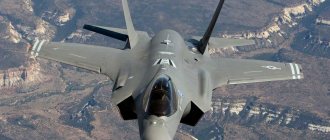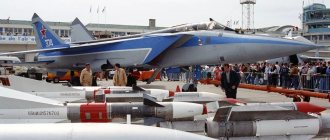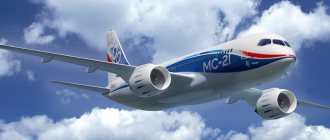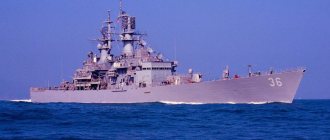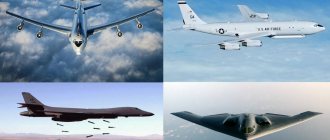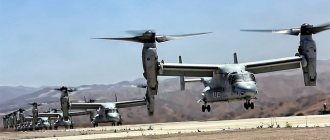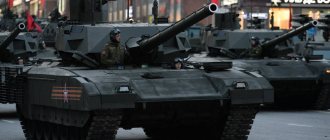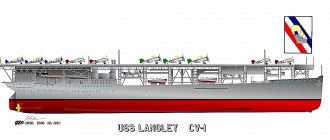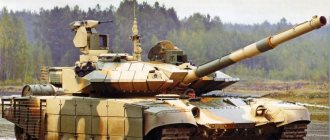Nowadays, the basis of fighter aircraft is fourth generation aircraft. And some poorer and “simpler” countries still use third-generation aircraft. And only the United States is armed with the latest fifth-generation fighters - the F-22 Raptor and F-35 Lightning II. Russia, China, and Japan are “in pursuit of the leader” in this area; their analogues are now at the development or testing stage.
The American Raptor was put into operation in 2005 and today is quietly serving in military service, although mass production of this vehicle has long been completed. But its fifth-generation “brother”, the F-35 Lightning II, still cannot completely “get on its wing,” although this machine made its first flight at the beginning of the last decade.
Americans are no strangers to high-profile scandals surrounding the activities of the military department and the military-industrial complex, but even for them the situation around the F-35 seems clearly too much. Some experts estimate the total cost of this program at 1 trillion (!!!) dollars. And with such expenses, the result is, to put it mildly, not entirely unambiguous. Last year, the Pentagon said that the fighter had exhausted all the time and funds that had been allocated for its development...
Donald Trump, while still a presidential candidate, vehemently criticized the Joint Strike Fighter (the name of the F-35 program). And once in the White House, he promised the Americans to force the military-industrial complex tycoons to moderate their appetites...
In Russia, the F-35 received the offensive nickname “Penguin” for a combat aircraft. For our “sofa” patriots, he has long become a favorite topic for ridicule and proof that military budgets are famously “cut” not only in Russia. And how can one not gloat here, if the Americans themselves regularly find more and more “bugs” in the design of the F-35.
On the other hand, last year it was announced that modification “A” of the aircraft was in basic readiness; the other two are promised to be completed by next year. Partners in the program are slowly beginning to disassemble the F-35: the British, Jews, Australians, Japanese and Dutch have become the happy owners of this “miracle machine”. Israel has already managed to use the F-35 in Syria and neither Assad’s Air Force nor the vaunted Russian S-400 could stop it. The commander of the Israeli Air Force called this aircraft a “real breakthrough”...
Operation of the machine officially began in 2012, and during this time not a single serious incident occurred that would lead to the loss of a pilot or aircraft. And this despite the fact that the F-35 managed to fly much more than 50 thousand hours. And in training battles with the best fourth-generation fighters, the Lightnings simply beat them “to one goal.”
So what is the F-35? A real breakthrough or an epic failure of the American aviation industry? To answer this question, you first need to understand the concept of this machine, because it is truly revolutionary and extremely ambitious.
And the Swede, and the reaper, and the trumpet player...
The F-35 is a whole family of fifth-generation multirole aircraft created during the implementation of the Joint Strike Fighter (JSF) program, which translates into Russian as “single strike aircraft.” The main features of the F-35 are its stealth and very advanced avionics, which provide the pilot with significant advantages in combat.
The lead developer of the machine and its manufacturer is the American aerospace giant Lockheed Martin. Other well-known companies, both American and European, are also involved in the implementation of the program: Northrop Grumman, Rolls-Royce, Allison, Pratt & Whitney and British Aerospace.
The plane first took to the skies in 2000, and in 2012 its limited operation began. The F-35 is usually described as being in low-volume production, although more than 260 aircraft have already been produced (December 2022). For comparison, we can say that less than 200 Raptors were manufactured during the entire production period.
There are three modifications of the aircraft: the F-35A ground-based fighter, which was created for the US Air Force, the F-35B, a short take-off and vertical landing aircraft for the US Marines and the British Navy, and the F-35C carrier-based fighter for the US Navy.
The JSF program was initiated in the mid-90s. Its goal was to create a fifth-generation universal aircraft capable of replacing several aircraft of different classes at once. In other words, the new aircraft had to combine the speed and maneuverability of a fighter, the combat load of an attack aircraft or bomber, and at the same time be able to land on a ship’s deck. And if we add to these requirements the criteria of the fifth generation, which the new machine had to meet, then we can understand how difficult the task the designers had to solve. Plus, vertical landing and short take-off...
Almost all modern fighters belong to the fourth generation: Russian Su-27 and MiG-29, American F-14 and F-15, European Eurofighter Typhoon and Dassault Rafale. The criteria for the fifth generation are stealth (stealth technology), advanced avionics, the ability to fly at supersonic speed without afterburner, versatility, and all-angle firing of targets. The Soviet and Russian concepts also include super-maneuverability; the Americans abandoned this criterion, considering it to be of secondary importance.
Today, the main complaint against JSF is its exorbitant cost. This is especially funny because the F-35 was designed to save money. The military needed an inexpensive, universal carrier platform for precision weapons. An aircraft, so to speak, for all occasions... The F-35 was supposed to replace an entire group of aircraft: F-16, A-10, F/A-18 and AV-8B, which, according to the developers, was supposed to dramatically reduce operating costs. But, as they say, it was smooth on paper...
How it all began
In the 1990s, the Pentagon decided to replace the very successful but aging F-16 fighter.
Defense department specialists said that it is necessary to create the same type of fighter in three versions: a conventional aircraft for the Air Force, a carrier-based fighter and an aircraft for the Marine Corps. Boeing, Lockheed Martin and McDonnell Douglas entered the competition to create a fifth-generation fighter. The first two reached the finals - the development of McDonnell Douglas turned out to be too expensive. Flights of the prototypes showed that the X-32 aircraft presented by Boeing is significantly inferior to its competitor from Lockheed Martin in key indicators - vertical takeoff and landing. So in 2001, Lockheed Martin gained access to a good money pie.
Serial production began in 2011, but these were small series - all the developers’ efforts were devoted to troubleshooting. The deck version was especially lame - the fighter could not land stably on the aircraft carrier simulator. Funding partners, despite strong diplomatic pressure from the United States, were constantly hesitant as the cost of the F-35 kept rising. Denmark either refused or agreed to buy 27 cars. Italy, despite the fact that one of the assembly plants was located on its territory, constantly reduced the volume of its order. Australia has switched to purchasing other fighter aircraft. And yet the process, as they say, has begun.
History of creation
Work on a new attack aircraft began in the mid-80s, the program for its creation was called ASTOVL. Specialists from NASA and the British Flight Research Center worked together on it. Their goal was to create a new vertical take-off and landing machine that could replace the legendary, but by that time already outdated Harrier VTOL aircraft.
However, the program developers were out of luck. The Cold War was coming to an end, and military budgets were being cut mercilessly. Therefore, in the early 90s, ASTOVL was closed.
Around the same time, the US Department of Defense put forward the idea of creating a single universal aircraft capable of replacing a number of combat vehicles developed in the 70s and 80s. This concept seemed very attractive, especially tempting from a financial point of view. The military placed special emphasis on reducing the cost of maintenance, repairs and various preventative maintenance, which amounts to about 60% of the life cycle cost of any modern combat aircraft.
In 1995, a specification for manufacturers was prepared, and two companies took part in the competition: Lockheed Martin and Boeing. At the first stage, they had to create demonstrator aircraft.
Their testing began in 2001, and it quickly became clear that the X-35, a prototype created by Lockheed, was head and shoulders above its competitor. It is often written on domestic resources that in the early 90s, Lockheed specialists collaborated with the Yakovlev Design Bureau, where they borrowed the design developed by Soviet designers for the Yak-141 VTOL aircraft.
One way or another, Lockheed Martin was declared the winner, and further financing of the program was undertaken by a whole consortium, which, in addition to the United States, also included Britain, Canada, Denmark, Turkey, Holland, and Italy. At that time, its cost was estimated at $230 billion, but very soon this budget was exceeded. Today experts, speaking about JSF, name completely different amounts...
The designers were faced with a very non-trivial task, so the progress of the project was difficult. Already in 2002, a significant (up to 30%) overweight of the aircraft structure was revealed. In response to this, a special department appeared that dealt with reducing the weight of the vehicle. The problem was solved only in 2004, and for this the engineers had to work hard.
Customers made life even more difficult for designers by regularly making changes to the project. Even in its initial stages, the US Navy adjusted its desires regarding the performance characteristics of the carrier-based fighter several times. Moreover, due to the specifics of the program, any changes to one modification immediately led to modifications to other versions of the aircraft, which immediately increased the cost of the project.
The most difficult progress was made on the F-35B, a short take-off and vertical landing aircraft. If for the power plant of the deck and land modification of the fighter it was possible to take the F119 engine tested on the Raptor, then for the SKVVP it was necessary to create a new power plant with a lift-propulsion engine. At the same time, in terms of weight and dimensions, it had to be fit into the design of a unified aircraft, which is not at all easy to do technologically.
As a result, we came to a design with a rotating nozzle and an additional fan. Its significant disadvantage is the extra weight - the total mass of the lifting engine is approximately 1800 kg - which is constantly forced to “carry” the fighter, thus reducing the payload. However, having carefully studied all other options, the designers recognized this scheme as the most optimal.
Work on the deck-based modification of the F-35C also progressed, not without difficulties. Initially, they wanted to equip the aircraft with an engine with controlled thrust vectoring and a boundary layer control system, thereby increasing the takeoff and landing characteristics of the machine. However, later it was decided to abandon such design elements. The deck version first took to the skies in 2009, and in 2012 a scandal broke out when a report on its tests was leaked to the press. The F-35C failed all nine attempts to land on a simulated aircraft carrier deck. The reason was the unsuccessful design of the fighter's brake hook. Moreover, the article stated that "the F-35C will never be able to land on an aircraft carrier." Almost immediately, representatives of the developer denied this information, assuring the public that they were already working on the problem and would soon be resolved. Judging by the fact that in 2014 F-35Cs already successfully landed on the deck of an aircraft carrier, this defect has indeed been corrected.
Difficulties that arose during the implementation of the JSF program led to its significant increase in cost and repeated postponement of the start of operation of the aircraft. In 2010, the US military department announced an increase in the cost of the program by 50%, and one fighter - up to $113 million. There was even an idea to abandon the modification of the F-35B, which caused a real outburst of indignation among the Marines. All this, of course, could not but cause irritation among the program participants.
The patience of the usually phlegmatic Scandinavians was the first to run out - in 2010, Denmark announced its withdrawal from the project. In 2012, Australia announced a similar decision. Representatives of this country can generally be called the most consistent critics of the JSF program. For several years they have been negotiating with the Americans on the purchase of the F-22, but on this issue the US position has always been unchanged - the Raptor is not for sale to foreign countries.
Canada was also considering the possibility of leaving the program. True, only if the cost of the fighter continues to rise and the start of its operation is postponed.
In 2010, Israel signed a contract for the purchase of 20 F-35s. According to it, the Israeli side was allowed to equip the fighter with a significant number of systems of its own production. By 2022, the Israeli Air Force plans to purchase 40 aircraft.
In early 2011, the first production F-35 took off, and a few months later it was transferred to the US Air Force.
On April 13, 2012, the first machine was manufactured for the UK. In March 2015, the Lighting assembly line began operating in Italy. This country will assemble cars for its own air force, as well as aircraft for the armed forces of the Netherlands.
In the same year, it was announced that the start of operation would be postponed to 2022 due to problems with the aircraft's weapons systems and software.
Currently, the US Army has just over a hundred F-35s of various modifications in service. The UK has 10 F-35B modifications. Nine aircraft are in service with the Israeli Air Force (they have their own modification of the F-35I with a lot of their own electronics). Two aircraft each are used by the Australian and Dutch armed forces, and three by the Italian Air Force. Last year, Japan received one F-35A aircraft.
F-35: The most expensive and unfinished fighter in the world
The United States does not hide the fact that it is proud of the design of its newest stealth fighter, the 5th generation F-35. As conceived by Lockheed Martin, this aircraft should revolutionize the arms market, as well as become one of the impressive new products in the US Air Force. At the same time, the Pentagon released a report in which it admitted for the first time that the project was going down. Why?
The F-35 Joint Strike Fighter program is recognized as the most expensive weapons project in the world. Its value is a fabulous 55.1 billion dollars. Surprisingly, the fighter development program has not yet been completed, but it is already entering service and even for limited export.
The main advantage of the F-35 is its invisibility to radars and the fifth-generation “stuffing”, including an active phased array radar (AFAR), capable of detecting air targets at a distance of 1.3 thousand kilometers. However, it should be noted here that the F-35 radar at such a distance was tested to detect group launches of ballistic missiles, and not all air targets in general.
The plane, in theory, was supposed to embody all the best in the American military aviation industry. However, large-scale shortcomings of the F-35 Lightning II are being talked about more and more often. This fighter has already become famous for its accidents, cases of engine failure or oxygen equipment; pilots have many complaints about the standard four-barreled gun. In addition, the F-35 is expensive to operate, as its stealth coating wears out quickly and requires replacement very quickly. A number of countries have already abandoned these aircraft: Germany announced that it was canceling the contract with the United States for their purchase, and the UK is close to such a decision.
The Pentagon released a report that for the first time assessed the state of the F-35 program, acknowledged the fighter's shortcomings and warned that the project is on the verge of failure due to all sorts of irregularities, including financial ones.
Problems with law
The American military publication Defense News reported that the Pentagon sent inspectors to check the status of the project. The results were disappointing. The inspectors said that the unit responsible for the project violated the law regarding government property leased to Lockheed Martin.
Photo: www.globallookpress.com
It turned out that the corporation disposed of the leased property, although it did not have the right to do so. Such state property includes both factory equipment and aircraft testing complexes. However, the most difficult thing is not this, but the fact that the project management did not coordinate the program with the Defense Procurement Management Agency. And this is already a serious violation.
As a result, the Department of Defense does not know the actual value of the F-35 contractor's assets and does not have independent reports on those assets, which are valued at $2.1 billion. Without such records, program officials cannot hold the main contractor accountable for illegal management of government property.
- the report says.
In other words, money was allocated for the program, but how it was used and what the company did with state property is a big question. As stated in the report, the Pentagon does not know how much allocated funds were actually spent in the interests of the US government, and also does not have the ability to independently assess the achievement of F-35 operational readiness goals.
Lockheed Martin also stated that it lost about $271 million during the operation of state property, but the Pentagon is inclined not to believe this, since it is no longer possible to carry out an audit.
The main conclusion here is the following: all the identified violations in the program itself and the opacity of funding can put an end to the final stage of the F-35 project, which involves conducting final tests.
F-35. Photo: www.globallookpress.com
Troubled fighter
It is still difficult to say whether the identified violations are the reason for such a huge number of deficiencies in the vaunted American fighter. It is also unclear to what extent all this may become the subject of the Pentagon’s lawsuit against Lockheed Martin. At the same time, inspectors from the Ministry of Defense also reported technological problems in the project. That is, the fact of violations in itself would not be so egregious if the fighter turned out to be good. However, it is unfinished, and this raises questions.
The most important shortcomings of the aircraft are the software and the high cost of its maintenance. Software updates are performed manually by specially trained engineers and using expensive airfield infrastructure.
The reason for the difficulties with the software is the imperfection of the Autonomic Logistics Information System (ALIS, automatic logistics information system) software package. The Pentagon is already close to declaring it obsolete technology from the 1990s, because the process of updating the software of one aircraft using this system can take up to a week.
In 2022, the Pentagon was already preparing a report on problems with the “brains” of the F-35. The government watchdog Project On Government Oversight (POGO) said at the time that due to glitches, the F-35 was sometimes simply unable to use air-to-air missiles, bombs and a cannon.
The Pentagon's second complaint is the short service life of one aircraft. The government editorial office of Bloomberg previously received data on the naval modification of the F-35B - a version with a short takeoff and vertical landing.
“Durability testing data shows that the service life of the short takeoff F-35B aircraft purchased by the Marine Corps is “significantly lower” than the expected 8,000 hours and could be as low as 2,100 hours. This means that some aircraft are expected to begin to reach their service life limit in 2026,” the publication writes, citing a Pentagon report.
F-35 program test corps director Robert Behler noted in the report that intermediate indicators of reliability and maintenance of the fighter in field conditions do not yet reach 80% efficiency. In addition, tests of the aircraft’s standard cannon showed “unacceptable” values for firing accuracy, the report says.
The F-35 is also vulnerable to lightning strikes and has defects in its inert gas generation system, which can lead to fuel ignition and explosion. Flights of part of the F-35 fleet were grounded in October 2022 due to defects in fuel pipes.
F-35. Photo: www.globallookpress.com
In addition, the Pentagon raises big questions about the ejection system. Tests have shown that it is capable of breaking the cervical vertebrae of pilots with a relatively small body weight - up to 61 kg. In addition, during testing, heavy pilots complained of pain in the neck and spine after ejection.
So, what is next?
The Pentagon's questions about the F-35 program are now leading to new problems. Alleged corruption and defects in the aircraft are already beginning to affect the export potential of the aircraft. Last year, Germany refused to order a batch of F-35s, which officially declared the aircraft unpromising. In the UK, reports were also released in 2022 that pointed to problems with the F-35. These documents contained a recommendation to abandon the purchase of fighter aircraft from the United States, including the naval F-35B.
Potential importers of this equipment may also be prompted to take such a step by the high cost of the aircraft - depending on the modification, one aircraft costs from $83 million to more than $100 million. It is quite obvious why the Pentagon wants to sort out Lockheed Martin’s affairs as quickly as possible: they suspect that the entire program has gradually turned into a banal money grab in the interests of contractors and the arms lobby.
Meanwhile, on March 18, Kommersant reported, citing sources in the Russian defense industry, that Russia had signed a contract with Egypt for the supply of several dozen heavy multifunctional Su-35 fighters. “Sushki” will be delivered to Cairo along with a batch of updated MiG-29M/M2 medium fighters. These aircraft will replace the obsolete MiG-21 and Chinese J-7 in the Egyptian Air Force. The contract value is $2 billion.
Su-57. Photo: Baranov E / Shutterstock.com
Russia is also actively testing the fifth-generation fighter Su-57, which is in no way inferior to the F-35 and will even surpass the American - for example, in speed, maneuverability and armament. At the same time, the Su-57 will not be so expensive, although its exact cost is still unknown.
In addition, tests of the newest generation 4++ generation fighter MiG-35 are being completed. This fighter is a deep modernization of the legendary MiG-29, which was delivered to more than 50 countries. The characteristics of the MiG-35 allow it to be compared with the F-35, although the Russian aircraft, for example, is faster (2.4 thousand km/h versus 1.9 thousand km/h for the F-35) and also has a larger combat radius (1.4 thousand km versus 1.1 thousand km). At the same time, the MiG also has fifth-generation “stuffing”, and the modernized airframe design of the ultra-reliable 29th MiG is responsible for the durability of the aircraft. But the most important thing is the price. The MiG-25 will cost around $40 million, which is about half the price of the F-35.
That is why now the prospects for the F-35 export program are very vague, but they are clearer for the newest Russian aircraft that compete with the American Molniya. A number of traditional buyers of our MiGs, for example, are more likely to prefer to buy the MiG-35 because of its price, the absence of the need to retrain flight personnel familiar with the MiG-29, and, of course, because of the guarantees of reliability and durability of the aircraft.
Description of the F-35 Lightning II fighter
The F-35 is a fifth-generation multi-role aircraft; its creation actively used the experience gained during the implementation of the F-22 Raptor project. But it should be noted that the F-35 has a more advanced avionics system than the Raptor. In general, in terms of its electronic “stuffing”, the “thirty-fifth” can be called the most advanced combat aircraft in the world.
Composite materials and technologies to reduce radar signature are widely used in the design of the fighter. According to the developers, the F-35's ESR is smaller than that of the F-22 Raptor. To reduce visibility to enemy radars, the aircraft's weapons are located in the internal compartments of the fuselage, although they can also be installed on external slings.
Modifications of the fighter A and C are equipped with the Pratt & Whitney F135 engine, which, in fact, is an upgrade of the F119 previously used on the Raptor. The F-35B modification has a propulsion system that includes a lift fan. The motor nozzle can be rotated down 95 degrees. Roll control during a vertical landing is carried out using additional nozzles. The overall control of the machine during this maneuver is controlled by a computer, which greatly simplifies the pilot's work.
Initially, the developers of the F-35 were not faced with the task of achieving the ability to achieve non-afterburning supersonic flight. However, the developers have already stated that the fighter can cover 240 km at a speed of Mach 1.2 without using the afterburner.
The F-35's avionics suite provides the pilot with the highest level of situational awareness. It includes:
- Multifunctional radar AN/APG-81. It has the latest generation active phased array and can detect both ground and air targets with equal success;
- Electro-optical system AN/AAQ-37. It consists of six IR sensors, which are located on different sides of the aircraft. This system allows you to detect ground and air targets, warn the pilot about the danger of a missile attack, track air targets, detect the launch of a ballistic missile at a distance of 1300 km, and perform navigation;
- High resolution IR camera CCD-TV. It is capable of finding targets both on the ground and in the air at a considerable distance, and also inform the pilot about laser irradiation of the fighter;
- Display and target designation system integrated into the pilot's helmet. The F-35 pilot's helmet is generally unique; it allows you to literally control the aircraft by turning your head, as well as see through the body of the aircraft. The operation of this system is ensured by many video sensors scattered throughout the fighter body;
- AN/ASQ-239 jamming system;
- The F-35 is equipped with the Link 16 data exchange system, which is also called the “celestial Internet”.
A PCD touch screen display is installed in the cockpit of the fighter. It displays information about the functioning of the aircraft's systems, flight parameters and locations of enemy air defense systems, and also suggests possible options for bypassing them.
The F-35 pilot's helmet can be called one of the most “breakthrough” technologies that were created during the implementation of the JSF program. It costs 770 thousand dollars and is selected individually for each pilot. The helmet shows the pilot information about the ground and air conditions around the aircraft. It tracks the position of a person's eyes and head and shows data about the area where his gaze is directed.
The F-35 is capable of using a wide range of weapons. The developers claim that the fighter can launch missiles and guided bombs from internal compartments at maximum supersonic speed. In the future, the F-35 will be able to carry tactical nuclear weapons. All three modifications of the vehicle are equipped with the GAU-22/A automatic cannon.
What is the price?
The most popular question regarding the JSF program goes something like this: How much does one F-35 fighter jet cost? The development of the program cost its participants (this is not only the United States) $55.1 billion; in addition, it is planned that with large-scale production, each aircraft will cost from $83 to $108 million, depending on the modification.
Donald Trump, already as president, said that the price of the program was “uncontrollable” and suggested that the military department pay attention to the F/A-18E/F Super Hornet carrier-based fighter. This speech instantly collapsed the shares of Lockheed Martin and a number of other companies participating in the project.
After several face-to-face meetings with Trump and Defense Secretary Mattis, Lockheed Martin executives—surprise, surprise—announced a major price cut on fighter jets. So, for example, the F-35A will cost 83.4, the F-35B - 108.1, and the F-35C - 93.3 million dollars. But this will happen only after the start of large-scale production, which is planned for 2022. The military, for its part, promised to increase the number of ordered vehicles.
Speaking about the cost of the program at 1 trillion dollars, it should be understood that this is the sum of all costs from the beginning of the program and for thirty years in advance. It is assumed that each “penguin” flies 8 thousand hours. By the way, one hour of its flight costs a little more than 30 thousand dollars, which is comparable to similar expenses on fourth-generation fighters.
